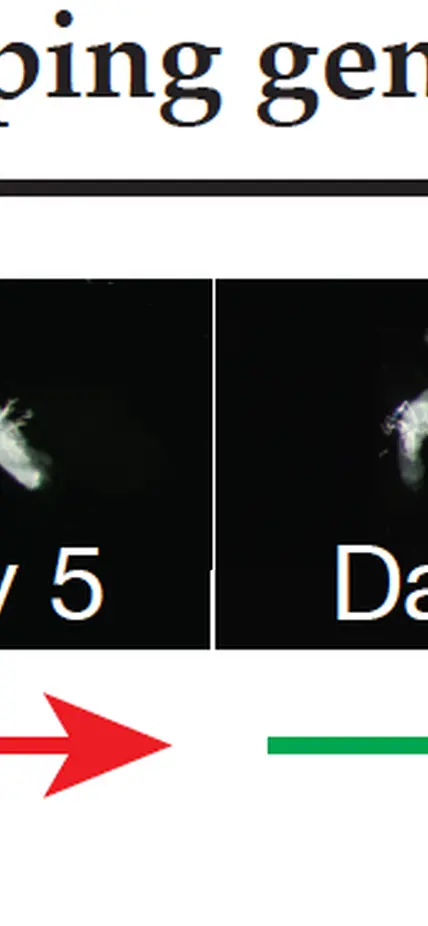Baltimore, MD—Since Carnegie Institution’s Barbara McClintock received her Nobel Prize on her discovery of jumping genes in 1983, we have learned that almost half of our DNA is made up of jumping genes—called transposons. Given their ability of jumping around the genome in developing sperm and egg cells, their invasion triggers DNA damage and mutations. This often leads to animal sterility or even death, threatening species survival. The high abundance of jumping genes implies that organisms have survived millions, if not billions, of transposon invasions. However, little is known about where this adaptability comes from. Now, a team of Carnegie researchers has discovered that, upon jumping gene invasion, reproductive stem cells boost production of non-coding RNA elements (piRNA) that suppress their activity and activates a DNA repair process allowing for normal egg development. The results are published in the November 1, 2018, issue of Developmental Cell.
The researchers studied jumping genes in the fruit fly Drosophila melanogaster—a classic model to study jumping genes in developing sperm and egg cells. To set up a powerful system studying jumping gene adaptation, the researchers needed a tool to control their activity. It has been known for four decades that environmental temperature influences the severity of sterility in the fruit fly upon jumping gene invasion. At temperatures of 77˚ F (25˚C) offspring have sterile ovaries, while at 64 ˚F (18 ˚C) offspring have fully developed and fertile ovaries.
“Because temperature had been widely known to affect sterility, we decided to quantify the rates of this jumping gene’s activity at different temperatures. We discovered that the rate of jumping gene mobilization was seven times greater at 77˚ F in ovarian stem cells, which means we can simply use temperature to control the invasion intensity from jumping genes,” remarked Sungjin Moon, the first author of the paper.
The junior research group, led by Staff Associate, Zhao Zhang included Carnegie’s Sungjin Moon, Madeline Cassani, Yu An Lin, Lu Wang, and Kun Dou. With this knowledge the team established the fly adult ovary as a powerful platform to uncover the underlying adaptation mechanism. They found that reproductive stem cells use a novel adaptive response to “rapidly tame” the invading elements by activating the so-called DNA damage checkpoint. This is a process that activates a pause in the cell cycle, before cell division, to repair damaged DNA. A checkpoint component, called Chk2, was found to be key. This pause in the repair process amplified the production of piRNA—those non-coding RNA elements that silence the jumping genes. They found that this pause period is necessary for adaptation and for permanently silencing the invading jumping genes, which allowed for normal egg production that could begin within four days.
“Jumping gene invasion triggers catastrophic genomic instability in all organisms,” remarked Zhao Zhang. “They greatly reduce the viability or fertility of the invaded animals and can lead to a population crisis. We believe that the ability of reproductive stem cells to rapidly adapt and restore fertility in this manner allows species to resist such a population crash. This mechanism is a lynchpin to species survival.”
TOP IMAGE CAPTION: The team found that reproductive stem cells use a novel adaptive response to quickly tame the invading jumping gene elements by activating the so-called DNA damage checkpoint. That is a pause in the cell cycle, which allows for DNA repair. The images depict ovary morphology changes over time after jumping gene invasion, the DNA damage checkpoint pause, and the repair process that ensues after day four. Image courtesy Zhao Zheng
SUPPORT: This work was supported by the grant from the National Institutes of Health to Z.Z. (DP5 OD021355) and the Carnegie Institution for Science endowment.
